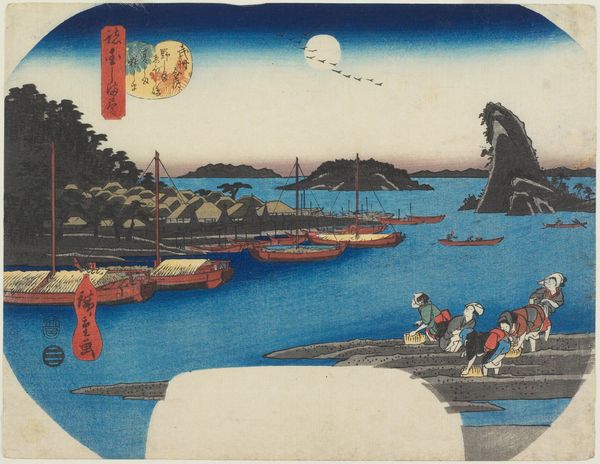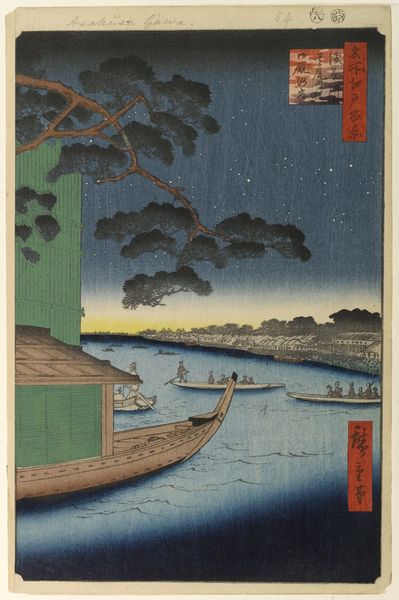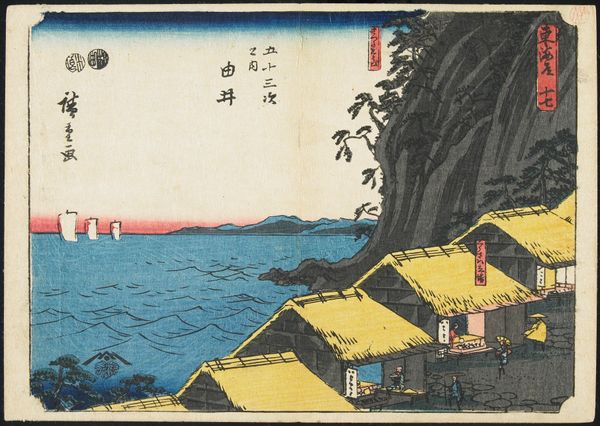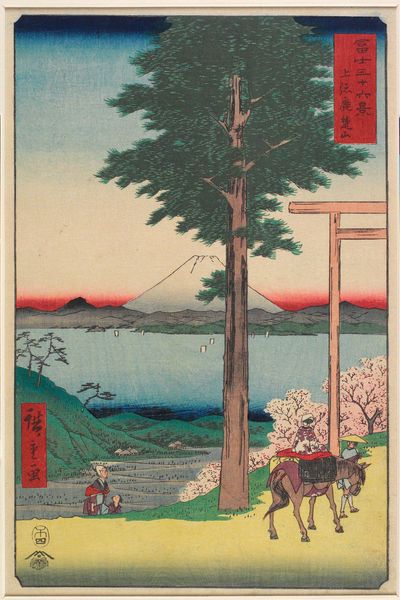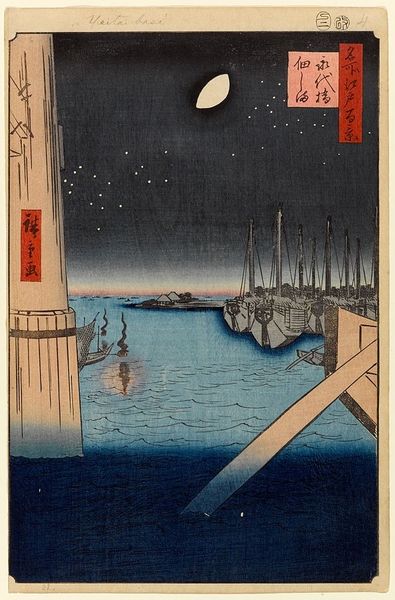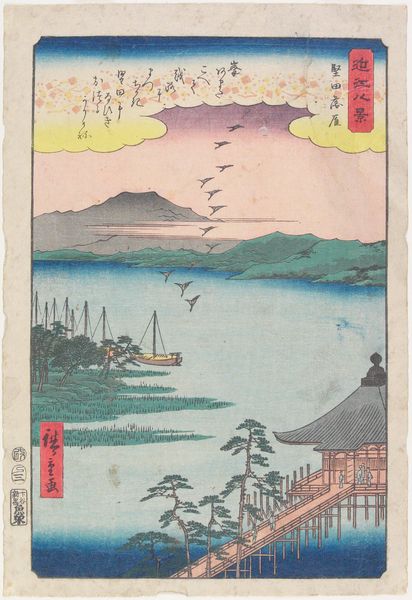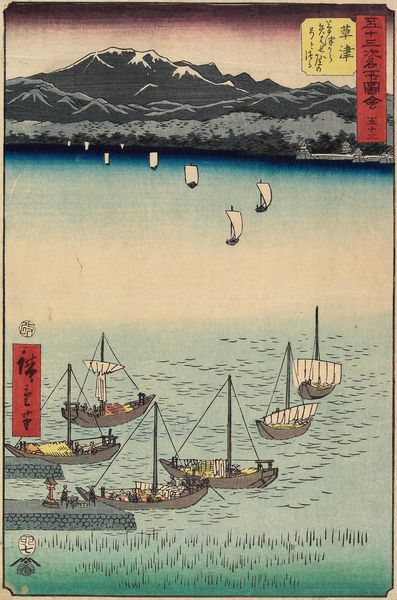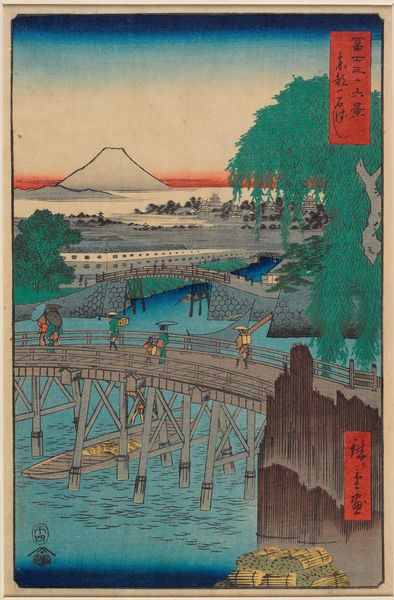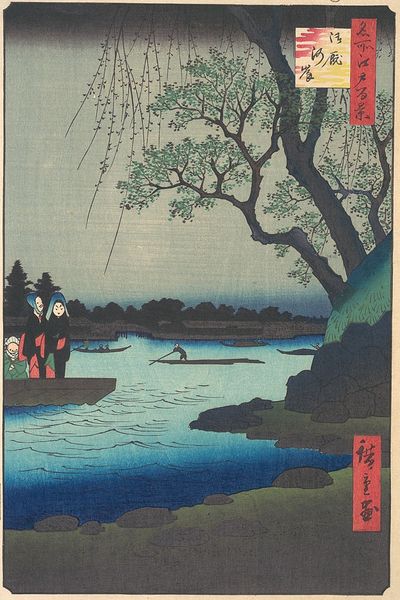
Dimensions: 12 15/16 x 8 5/8 in. (32.9 x 21.9 cm) (image)
Copyright: Public Domain
Curator: Before us is "View from Kanagawa Hill," a print attributed to Utagawa Hiroshige III, possibly created around 1872. It’s part of the Minneapolis Institute of Art's collection and exemplifies the Ukiyo-e style. Editor: It’s evocative—that hazy moonlight dominating the sky. The scene feels incredibly balanced with its architectural foreground, the lively human element, and then that deep view out across the harbor to the ships on the water. Curator: Indeed. The composition, with its distinct layering, offers an intricate interplay of spatial planes, guiding the viewer's eye from the detailed foreground towards the serene distance. Let’s consider the process of creation; this is a woodblock print, likely involving numerous blocks for each color, each demanding precise carving and registration. Editor: I’m immediately drawn to the human labor embedded within those visible craft elements, especially when you compare it to those western ships lingering offshore, hints of a very different production—larger industry and more mechanical techniques. Do you think it emphasizes the traditional industries over emerging modernity? Curator: Perhaps. Although it also speaks to the compositional structure. Notice how the architectural details, like the rooftops and the figures on the veranda, employ crisp lines and blocks of color, contrasted with the softer gradations of the sky and water. This highlights the duality of form inherent in Japanese prints, playing with tension and harmony in the picture plane. Editor: But it's all about material choices, isn’t it? Look at the way the ink bleeds subtly, softening what could have been too sharp, making the ships across the bay appear to blend gently in the evening haze. What was the cost, and how accessible was the piece? Because Ukiyo-e was mass-produced, its existence relied on this economic structure. Curator: Precisely. One cannot divorce the artistic merit from its socio-economic roots. The very act of mass production facilitated the spread of images and ideas, democratizing access to art—to some extent. Editor: In many ways, it asks us to examine the values it celebrates. What kind of leisure is showcased here, how does it interact with commercial development of this area? Curator: Absolutely. It is a piece brimming with quiet contemplation. The gentle gaze into the moonlit night might itself be another narrative, inviting viewers to introspect on their location within the great flux of historical momentum and its material cost. Editor: Thank you, that illuminates so much more about what one initially notices, those quiet material processes within a scene of potential global significance.
Comments
No comments
Be the first to comment and join the conversation on the ultimate creative platform.
